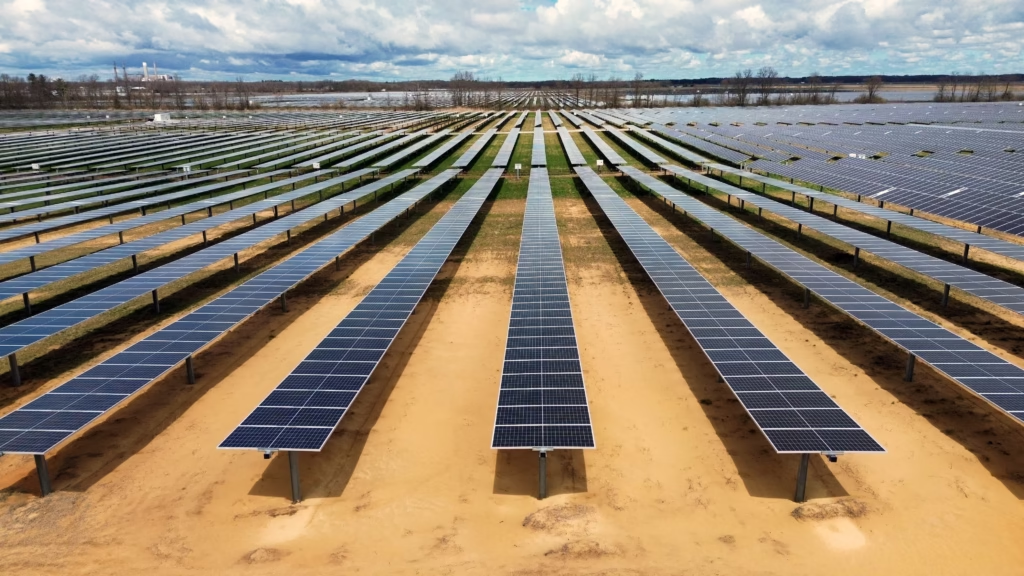In a major push to support clean innovation and combat climate change, California green-tech subsidies have been launched to help businesses transition toward sustainable operations. This new subsidy program is part of the state’s broader climate action plan, aimed at reducing greenhouse gas emissions while boosting green economic growth.
From solar panels to energy-efficient manufacturing tools, the initiative offers financial assistance to companies investing in environmentally friendly technologies. It’s a move that not only benefits the planet but also gives businesses an edge in a competitive, sustainability-focused market.
Why California Green-Tech Subsidies Matter Now
California has long been a leader in climate action and environmental policy. However, the urgency of climate change, rising energy costs, and the global push toward decarbonization have accelerated the state’s need to act decisively.
The new California green-tech subsidies come at a time when many businesses are struggling to balance sustainability goals with economic pressure. By offering direct financial support, the state hopes to encourage innovation and investment in green technologies that can lower emissions and operational costs.
What the Green-Tech Subsidies Offer
The subsidy program provides:
- Grants and Rebates: For installing renewable energy systems such as solar panels, wind turbines, and geothermal systems.
- Tax Incentives: Including credits for companies that invest in energy-efficient machinery and electric vehicle (EV) fleets.
- Low-Interest Loans: For green infrastructure upgrades in manufacturing, transport, and logistics.
- Training Support: Funding for workforce development in clean-tech jobs and certifications.
- R&D Funding: Financial support for companies developing new green technologies, materials, or software solutions.
Who Qualifies for the Subsidies?
The California green-tech subsidies are open to a wide range of businesses, from startups to large enterprises, provided they meet the eligibility criteria:
- Must be registered and operating in California.
- Must demonstrate a commitment to adopting or developing green technologies.
- Must provide data showing expected environmental benefits, such as reduced emissions or energy consumption.
- Preference will be given to companies located in disadvantaged or pollution-burdened communities.
Sectors That Will Benefit the Most
The subsidies are designed to support several key sectors with high environmental impact:
1. Manufacturing
Factories and production facilities can use the funds to replace outdated equipment with energy-efficient alternatives or install solar panels on-site.
2. Transportation and Logistics
Fleets can transition to electric trucks and vans, while warehouses can adopt smart systems that reduce power usage.
3. Construction and Real Estate
Builders can access funds for green materials, LEED certification, and energy-efficient building systems.
4. Agriculture
Farmers can upgrade irrigation systems, invest in renewable energy, and reduce fertilizer-related emissions.
5. Technology and R&D
Tech startups working on AI-powered energy management, carbon capture, or sustainable materials will be supported.
Success Stories: Businesses Already Reaping the Benefits

Several California businesses are already seeing results thanks to pilot versions of this program:
- GreenFlow Logistics, a mid-sized delivery company in Sacramento, replaced half its fleet with electric vans. With subsidy support, their monthly fuel savings exceeded $12,000, and emissions were cut by 48%.
- SolarSmith Manufacturing in Fresno installed solar panels and upgraded their ventilation system. The result? A 35% drop in electricity bills and increased air quality for employees.
- BlueAgTech, an agri-tech startup, used R&D funding to create biodegradable packaging made from local seaweed. They’ve since landed deals with major food distributors.
How to Apply for the Subsidy
The application process is streamlined to reduce bureaucracy and ensure faster access to funds. Here are the steps:
- Online Registration: Businesses must register through the California Green Energy Office portal.
- Project Proposal: Submit a detailed plan outlining the green-tech investment and expected benefits.
- Assessment & Approval: A government panel reviews the proposal for feasibility, impact, and ROI.
- Funding Release: Upon approval, funds are released based on project milestones.
- Reporting: Businesses must provide quarterly updates to maintain compliance.
The first round of applications opened on July 15, 2025, and the next deadline is September 30, 2025.
What California Officials Are Saying
California Governor Gavin Newsom stated,
“We are not just fighting climate change—we’re creating jobs and modernizing our economy. These green-tech subsidies are a win-win for the environment and California businesses.”
State energy officials predict that the subsidies will lead to a 20% increase in green-tech investments over the next two years, potentially generating more than 100,000 new clean energy jobs across the state.
How This Aligns with California’s Climate Goals
The subsidies are part of California’s long-term Climate Resilience Strategy, which includes:
- Cutting greenhouse gas emissions by 40% by 2030 (compared to 1990 levels).
- Achieving 100% zero-emission vehicle sales by 2035.
- Investing $50 billion in clean energy infrastructure over the next decade.
By directly supporting businesses, the green-tech subsidies address both economic and environmental objectives in a single policy.
Challenges and Criticisms
While the program has been widely welcomed, some concerns remain:
- Small Business Access: Critics argue that larger companies may have an advantage due to better resources for navigating the application process.
- Red Tape Risks: If not properly managed, the program could face delays and funding bottlenecks.
- Long-Term Funding: Sustainability of the program will depend on future budgets and political will.
To address these, the state has committed to setting up local support centers and partnerships with business associations to assist applicants.
The Bigger Picture: A Green Future for California
The California green-tech subsidies are more than just financial incentives—they’re a clear sign that the state is serious about its green transition. As businesses adopt sustainable practices, they not only reduce their carbon footprint but also become more competitive in a global market that’s demanding transparency, sustainability, and innovation.
In the long run, California aims to become the global hub for green innovation, and this subsidy program is a major step in that direction.
Final Thoughts
If you’re a business operating in California, now is the time to explore the opportunities offered by these new subsidies. Not only can you cut costs and reduce environmental impact, but you’ll also join a growing movement of future-forward companies shaping a more sustainable tomorrow.
Read Next – Retail Closures Due to Inflation Pressures Consumer Spending






